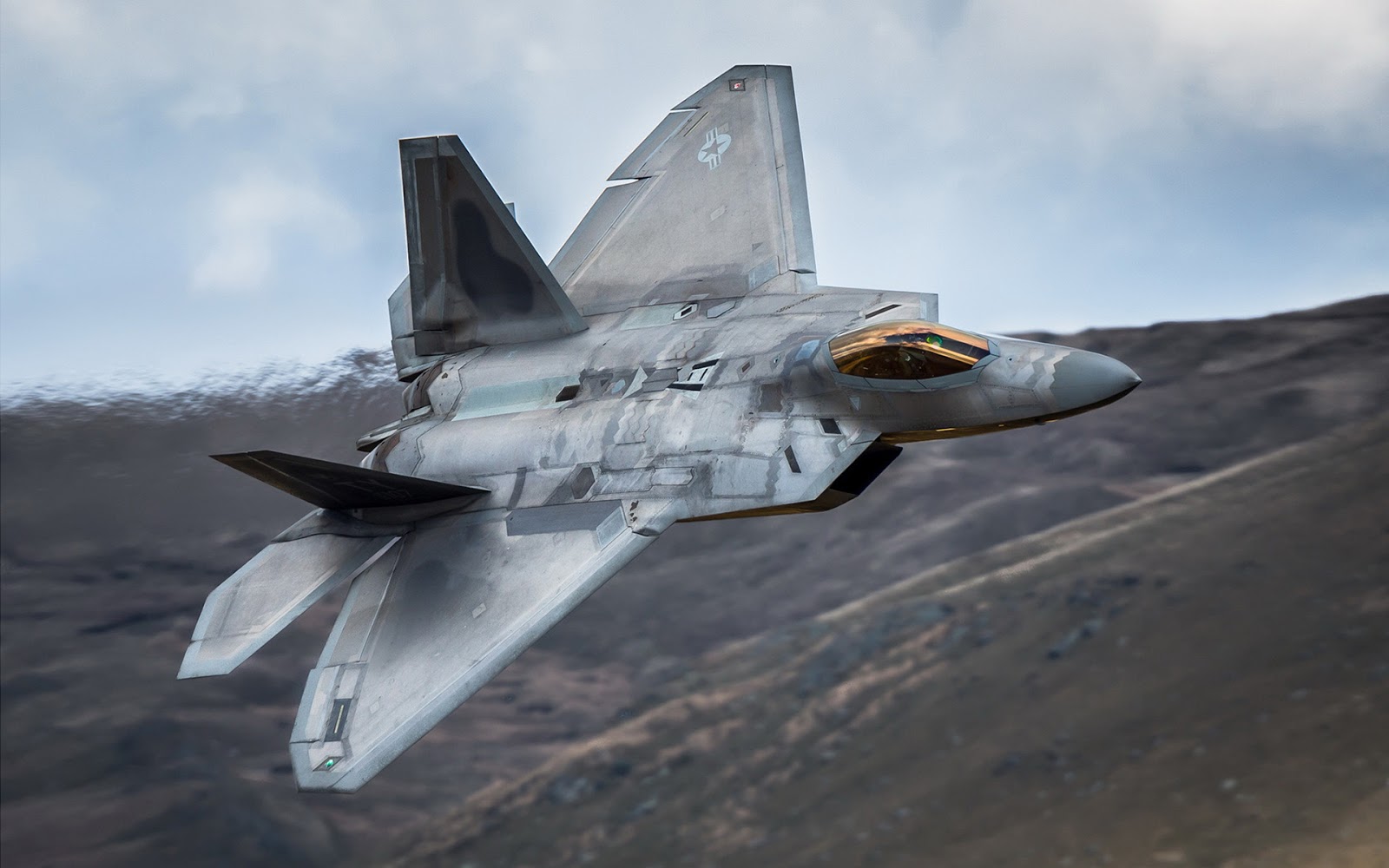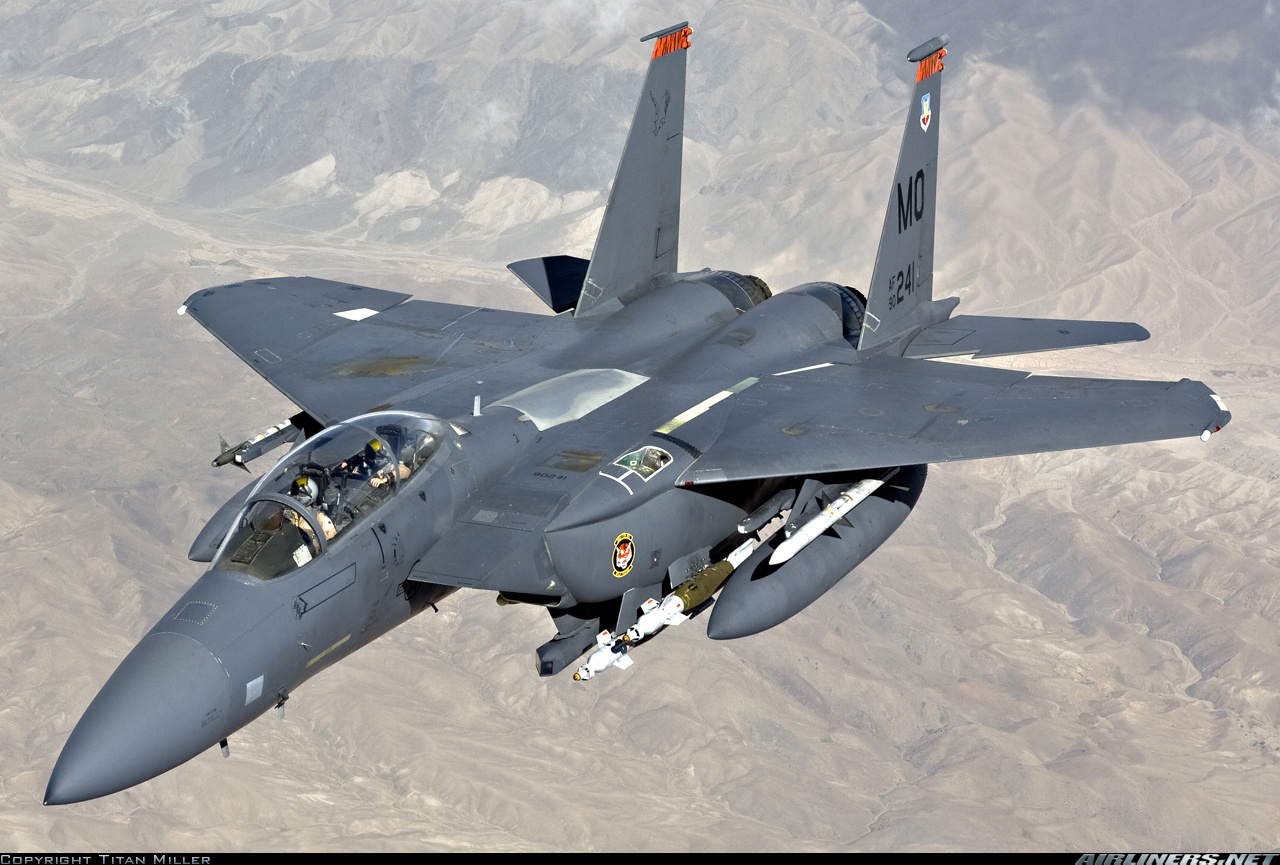F-22 Raptor vs F-15 Eagle: Battle for Air Supremacy
For almost half a century, the F-15 has stood as a premier fighter aircraft within the USAF, side by side with the F-16. However, with the introduction of the F-22 and F-35 to replace them, a debate emerged regarding the superiority of the F-22 over the F-15.
The F-15 and F-22 each hail from distinct eras, embodying design philosophies reflective of their times. Although they often collaborate rather than directly engage in combat, the question remains: which one is superior?
To determine the answer, let’s delve into a comparison of these two formidable aircraft.
Lockheed Martin F-22 Raptor
The F-22 Raptor, designed by Lockheed Martin, is a twin-engine, all-weather stealth tactical fighter plane crafted for the United States Air Force (USAF). Initially conceived as an air dominance fighter, it also incorporates ground assault, electronic warfare, and signals intelligence capabilities.
Lockheed Martin primarily constructed the airframe and weapon systems, overseeing final assembly, while Boeing contributed the wings, aft fuselage, avionics integration, and training systems.
First taking flight in 1997, it was designated as the F-22A in December 2005. Despite development challenges, the F-22 is recognized for its pivotal role in the USAF’s tactical airpower, enabled by its stealth, aerodynamic performance, and advanced mission systems.
F-22 Cockpit
Equipped with traditional throttle and stick controls, the cockpit boasts six color LCD displays. Kaiser Electronics’ multifunction display outlines threats and their relevance, offering comprehensive tracking information.
Communication options, maps, ID badges, and flight displays are accessible on two screens. Three tertiary monitors display data on air and ground threats, inventory management, and security alerts.
The BAE Systems’ HUD (Head-Up Display) provides essential target, weapon, envelope, and firing information. An onboard camera captures HUD data for later analysis.
F-22 Weapons
Internally mounted above the right intake duct is a Vulcan cannon akin to the M61A2. The aircraft stores 480 rounds of 20mm ammunition in a General Dynamics linkless ammunition handling system, feeding the cannon at a rate of 100 rounds per second.
External fuel tanks and AIM-120A AMRAAM missiles can be attached to the aircraft’s four hard points on the wings. Concealing three weapon bays, the F-22 can carry six AMRAAM AIM-120C missiles or a mix of AMRAAM and GBU-32 joint direct attack munitions.
The F-22’s countermeasures include a radar warning receiver and BAE Systems’ information & electronic warfare systems (IEWS) missile launch detector.
F-22 Bases
The initial F-22A Raptor operational wing was stationed at Langley Air Force Base, followed by Elmendorf Air Force Base and Holloman Air Force Base. Active Raptors are also stationed at Hickam Air Force Base in Hawaii.
Variants of F-22
Variants include the YF-22A prototype, the single-seat F/A-22A, and the proposed F-22B two-seat variant.
Boeing F-15 Eagle
The F-15 Eagle, developed by Boeing (formerly McDonnell Douglas), is a twin-engine, all-weather tactical fighter. It was chosen by the United States Air Force in 1969 to fulfill the need for a dedicated air superiority fighter.
Entering service in 1976, the F-15 boasts an impressive combat record, with almost 100 victories and no losses in aerial combat, particularly notable from the Israeli Air Force.
F-15 Development
While initially designed for air superiority, the F-15’s adaptability allowed for all-weather strike capabilities, and it has undergone updates to its armament control systems and software.
F-15 Cockpit
Crewed by either one or two personnel, the F-15’s cockpit houses Sperry and Kaiser cathode ray tubes for data display. The pilot or weapons systems officer (WSO) can access radar, electronic warfare, or infrared sensor data for situational awareness and target selection.
F-15 Weapons
Equipped with Pratt & Whitney F100-PW-229 low-bypass turbofan engines, the F-15’s power output allows for rapid acceleration. The aircraft can carry a range of air-to-air and air-to-ground ordnance, including Sparrow, Sidewinder, and AMRAAM missiles.
Countermeasures on the F-15 include electronic warfare systems and radar warning receivers.
F-15 Variants
Notable variants include the F-15E Strike Eagle and the proposed F-15N Sea Eagle for carrier use.
Comparison: F-22 Raptor vs. F-15 Eagle
The F-22’s internal storage impacts its drag, while the F-15 boasts an impressive combat record. Both aircraft have distinct engines, with the F-22 featuring Pratt & Whitney F119-100 engines and the F-15 equipped with Pratt & Whitney F100-PW-229 engines.
In conclusion, the F-22 and F-15 each have their strengths, reflecting the design philosophies of their eras. Despite the F-15’s combat successes, the F-22’s advanced stealth and technology have made it a cornerstone of USAF tactical airpower. The choice between these iconic aircraft depends on mission requirements and priorities.
Hits: 76
















